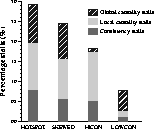
Figure 6: Breakdown of stall rate for local and global causality
This section evaluates the cost of supporting local causality by comparing its stall rate with what happens in a system that supports lazy consistency without any causality. It also evaluates the additional cost of supporting global causality. The results are shown in Figure 6; the results are for a 5-entry multistamp. We can see that the stall rate approximately doubles when support for local causality is added to lazy consistency, and it increases further when support for global consistency is added.

Figure 6: Breakdown of stall rate for local
and global causality
Lazy consistency without local causality is implemented by having the client maintain a table SSTAMP that maps servers to multistamps; every time the client receives a fetch reply from server S, it merges the multistamp in the message into SSTAMP[S]. Furthermore, rather than a global REQ table, REQ stores information only for the current transaction. REQ is empty when the transaction starts. The first time the transaction accesses an object from server S, it uses SSTAMP[S] to update entries for other servers used by the transaction in REQ, and then sends invalidation requests to these other servers if necessary. After commit, REQ is merged into SSTAMP[S] for all servers S accessed by the current transaction T (to capture T's dependencies).
In a system with just lazy consistency, single-server transactions cannot stall, and even in a multi-server transaction, a client's requirements are due only to the servers used in that transaction. Thus, the following situation must occur for a client to stall: Client C fetches page P at server S in a multi-server transaction that also involves server R. Page P must have been modified recently by a multi-server transaction that also involved server R and that caused an invalidation for C. The likelihood of a multi-server transaction (fetching P) depending on another ``temporally close'' multi-server transaction is low. The fact that we keep track of exact dependencies at validation ensures that a preparing transaction depends on very few recent transactions (in HOTSPOT, this was less than 1.5 and in HICON it was around 4). Also, 80% of these transactions are single-server so that the multistamp of a preparing transaction will mostly contain entries for this server. As a result, when P is fetched, P's multistamp contains entries for other servers mostly due to the last transaction that modified it.
When local causality is supported, there are more stalls since a transaction can stall due to requirements generated in an earlier transaction. For example, without causality single-server transactions never stall but now they do; we observed that with local causality about half the total stalls in HICON and HOTSPOT were stalls in a single-server transaction.
Global causality is supported by adding the following to the implementation described in Section 5: the coordinator sends a transaction's multistamp to the client in the commit reply; the client sends its current multistamp to the server at the next commit request; and the server merges it into the multistamp generated for that transaction. Global causality further increases the stall rate because clients now act as ``propagators'' of multistamps. Without global causality, multistamp information was propagated across servers only through multi-server transactions. Now when a client ``switches'' servers, it propagates the multistamps (generated due to its previous commits) to the new servers. Also, faster propagation causes more pruning to occur (since the multistamp has more entries); the threshold is raised, resulting in more stalls.